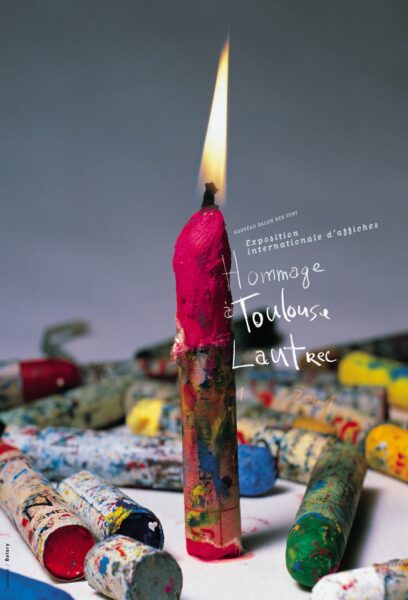Author: Michal Batory
Michal Batory was born in Lodz, Poland in 1929 and graduated from the Lodz School of Fine Arts. Batori immigrated to Paris in 1987 and since 1994, as a graphic designer, for the centers of various cultural institutions of the Colin National Theater, the French National Museum, the Wilt Scientific and Industrial Complex, the Pompidou Historical Center, Radio France, the Ministry of Culture, etc. He started working as a freelance graphic designer. Batory's work as a poster designer has been published in some books, such as Polish Poster Art and Michelle Batory Emotional Graphics. Michelle Batory has won numerous awards at various international competitions, some of which can be mentioned here:
Second Prize from the Schuman International Poster Festival (France-1999)
The third prize is from the International Poster Design Biennial of Bulgaria (2001), the silver medal from the biennial of poster design in Chicago (USA-2008) and has been exhibited in various art exhibitions and forums, to name a few:
1993 - Design 70 posters honoring ordinary prisoners.
1993, work in "Editing French Characters", England.
1994 Exhibition "Hiroshima after Mathematics" organized by the Peace Movement of France, Japan, Switzerland and the United States.
1996, Participated in the exhibition "French Designers" in Poland.
2007, "Three-year international poster" in Bulgaria.
2014, "Untitled Images" Gallery, Paris.
2016, Exhibition "250 Michelle Battery Posters" in Argentina.
2017, Michel Batury Posters Exhibition in Poland.
"My world was a world of words and books," writes Alexandra Crowe, Michelle Batory's sister, who writes about Michelle Batory in an article entitled "The First Steps." While Michelle saw the world with imaginary shapes she created for herself. He saw images between the clouds and the gray sky, and between the seams of the bathroom tiles, he created animals such as snakes, giraffes, etc., and it was these images that inspired his book "Mevoir" years later.
"Michelle was always one of the weakest students in elementary school, and that worried the family, but little by little she showed her artistic talent by making wooden sculptures," said Alexandra Crowe. When our older brother decided to go to Lodz Art School, a teacher came to our house on a weekly basis to teach art lessons, and Michelle was allowed to attend classes. Michelle then underwent major changes and began reading biographies of artists such as Michelangelo and Leonardo da Vinci. In his room, watercolor sketches could be found, and it was his early work that allowed him to take the Lodz Art School entrance exam without the need for a school agreement. From then on, there was no sign of frustration or lack of self-confidence in Michelle, as she had found her own world.
"I think Batory's early works are less attractive than the works we see now," says Alain Lecornes, a graphic designer and a prominent professor of French art. Today, after the experiences he has always learned from himself, he has reached a very good position to attract the audience. "The language of Batory's work is classic with a surreal and imaginative feel, and like other Polish graphic designers, Salvador Dali's influences can be seen in his posters." As Batory himself says, "I have always been influenced by France, French culture, and baguette", he has made the most creative use of this French phenomenon in the design of music concert posters and its combination with the saxophone (Figure 1). The melodious sound of slicing a baguette is a sound that is familiar and pleasant to all French people.
"Batory is not the only graphic designer who uses a combination of objects. However, it must be said that Batory's work is specific, different, and has a purely emotional origin," says Ellen Lecornes. Rarely present in the works of other artists. The simplicity of Baturi's works fascinates me at first sight. The use of objects such as plastic bags, sticks, earplugs, etc. that we deal with in daily life are other reasons for this attractiveness (Figure 2).
Batory in an interview with René Vaner on his personal website in response to the question: What is your plan after retirement? "For a creative person, there will never be a pension," he says.









